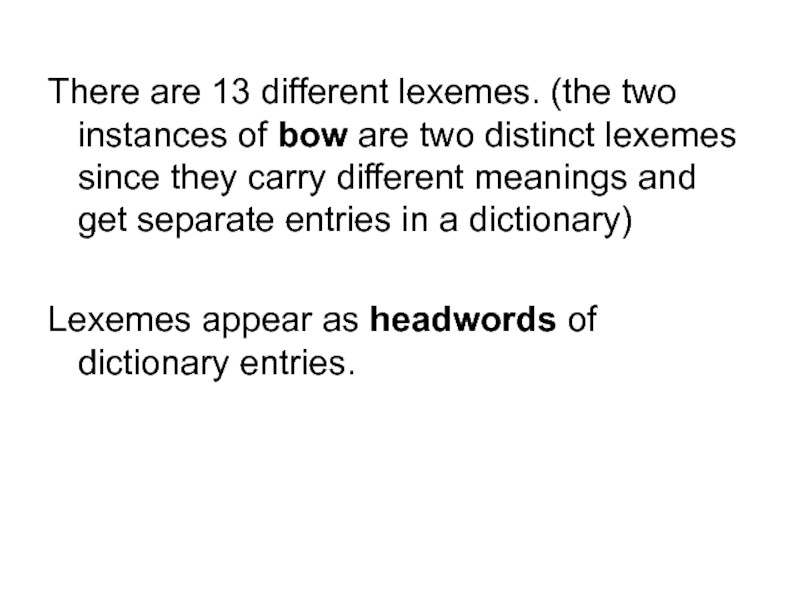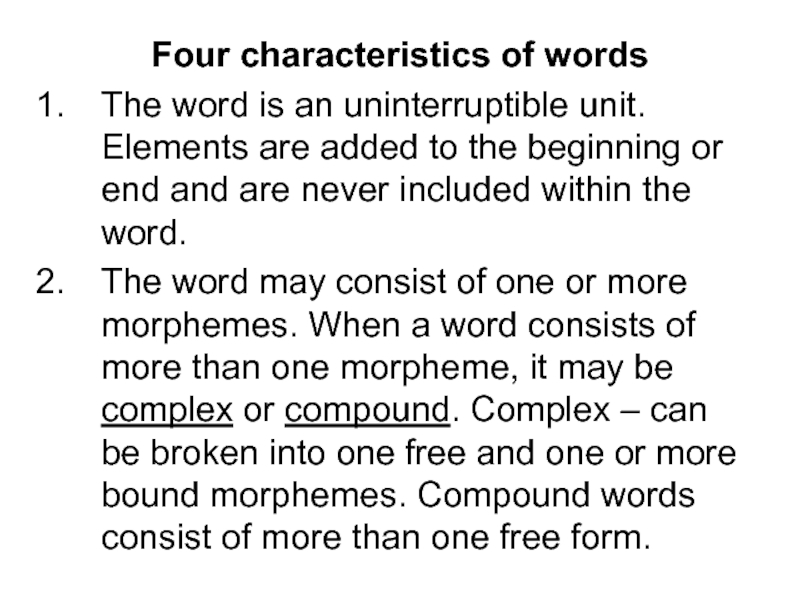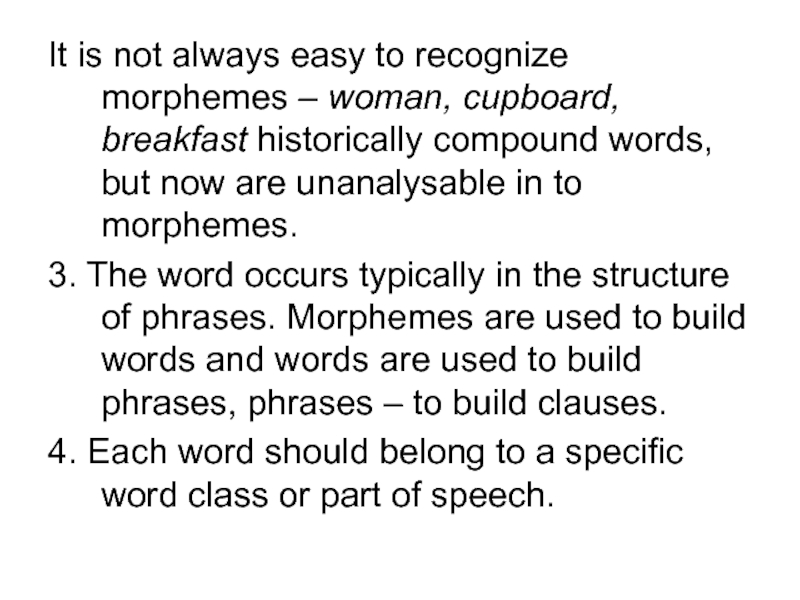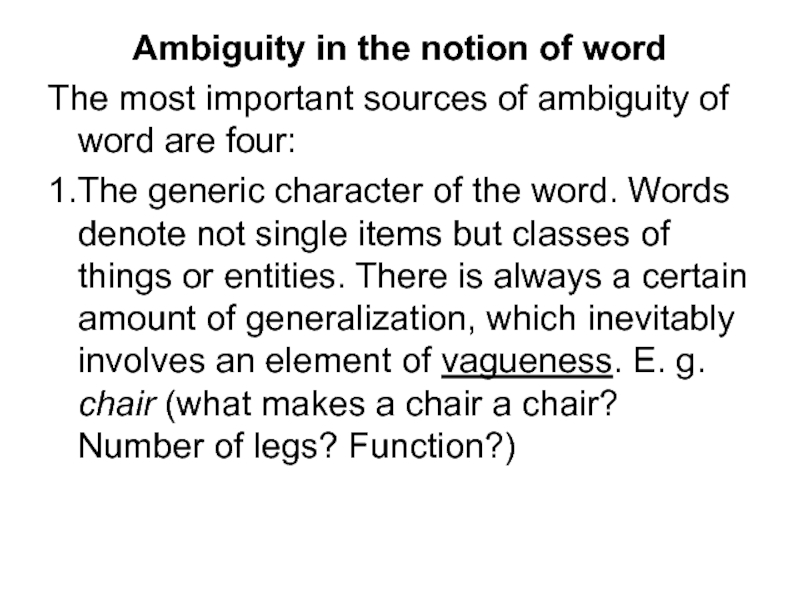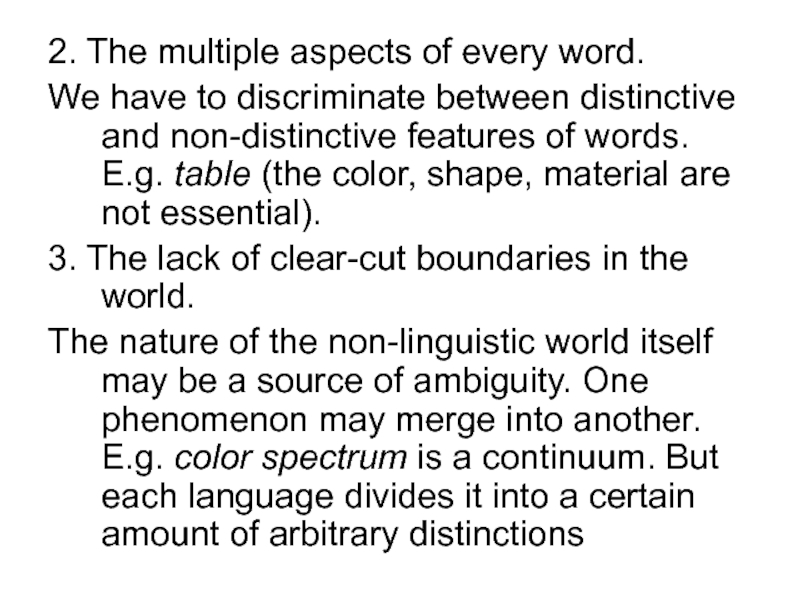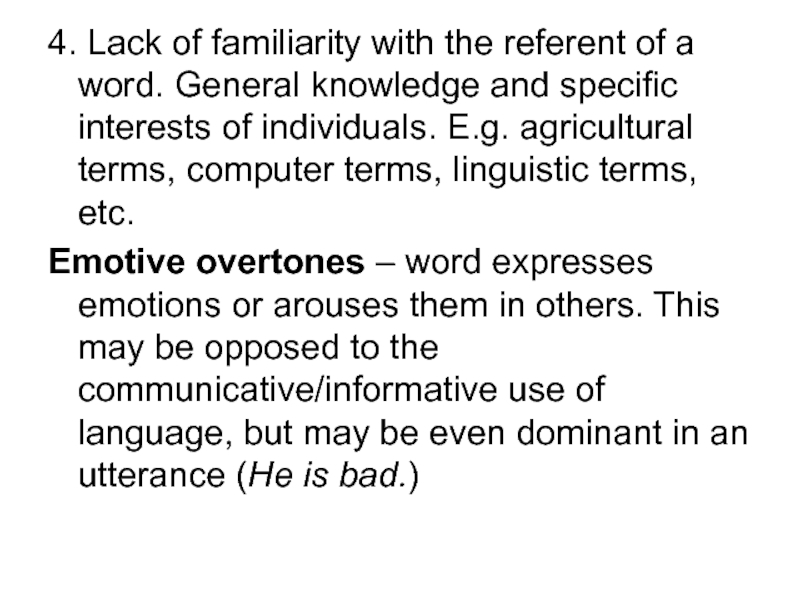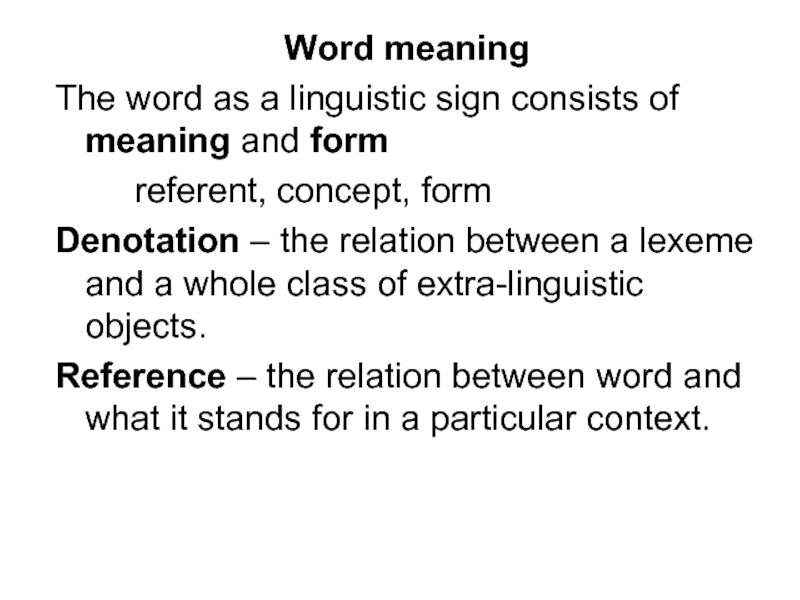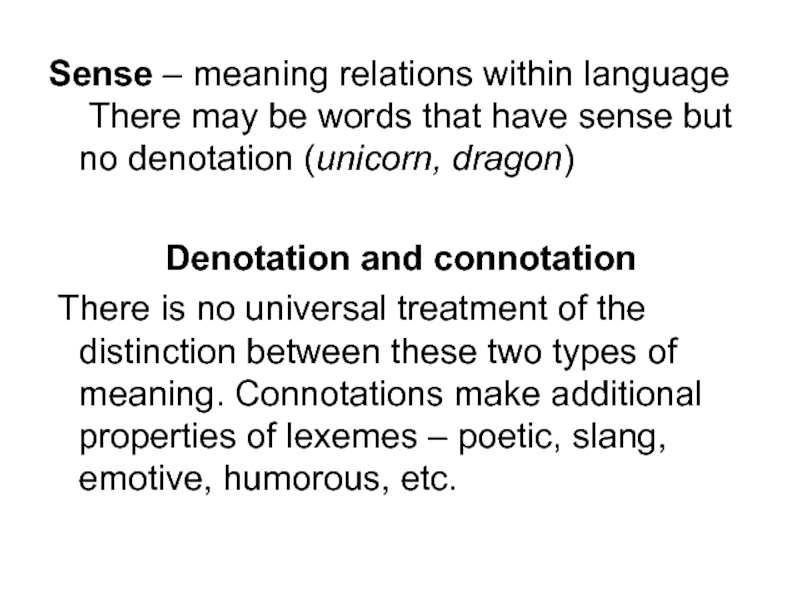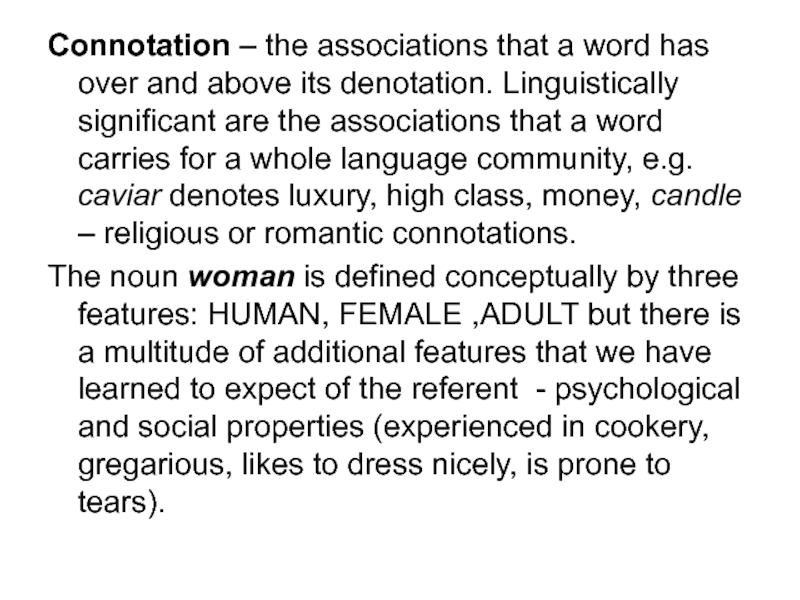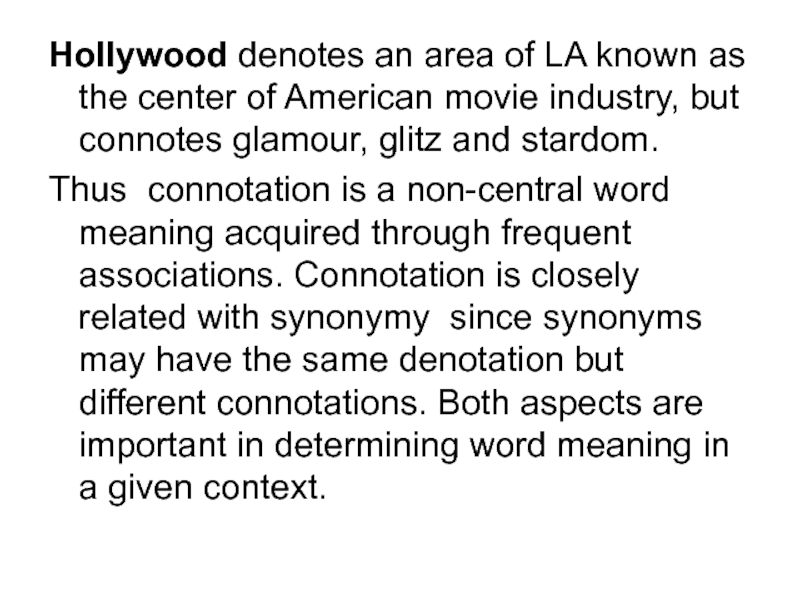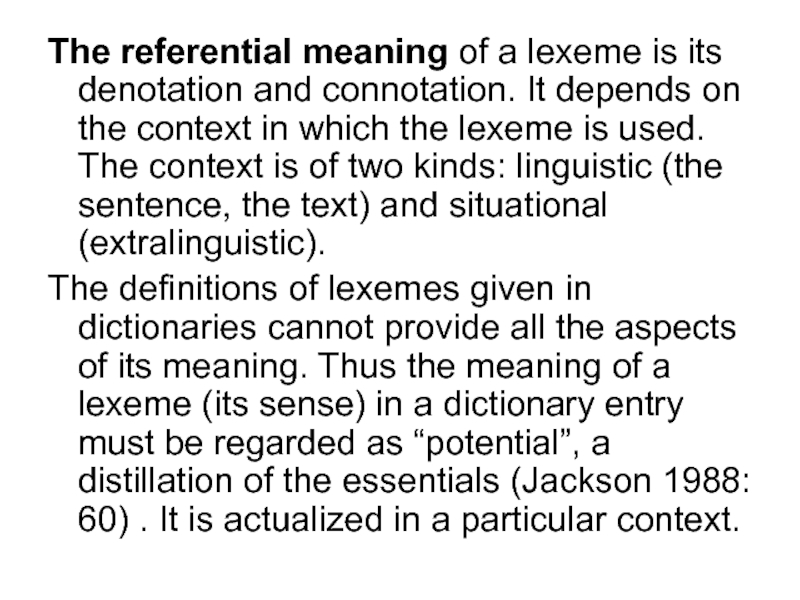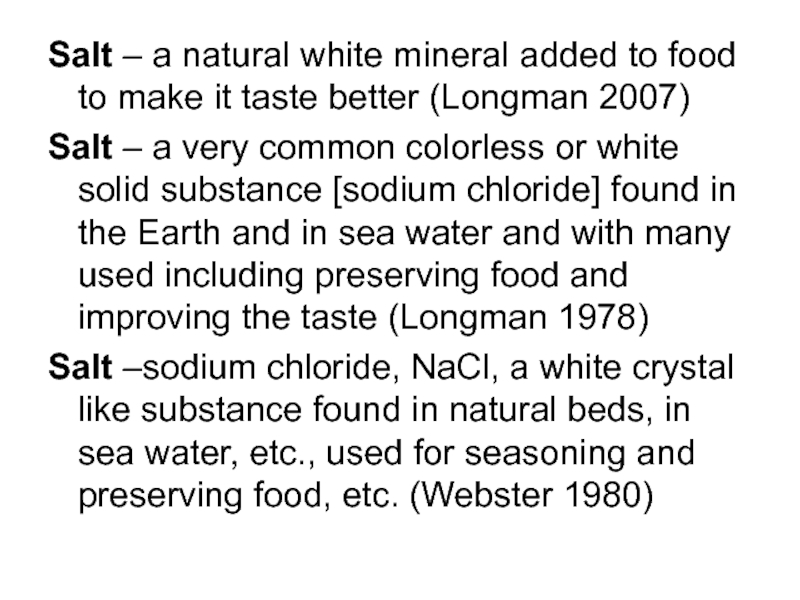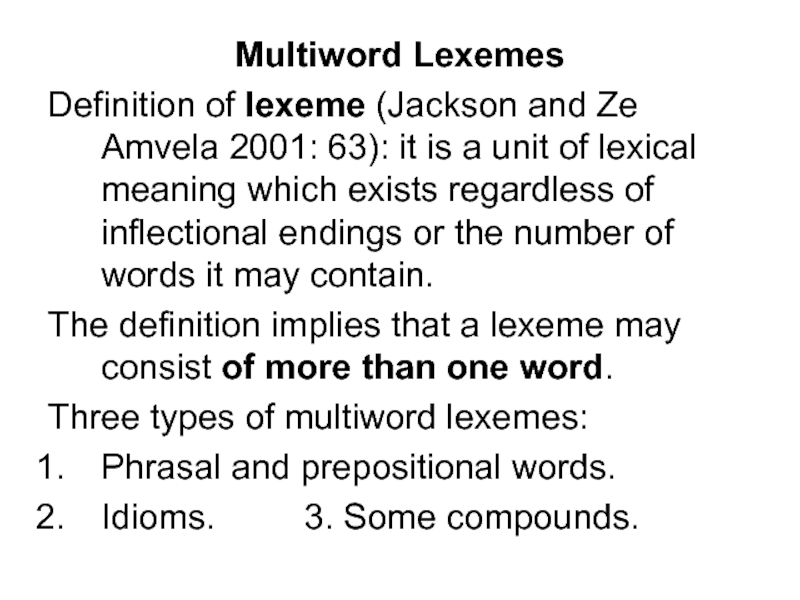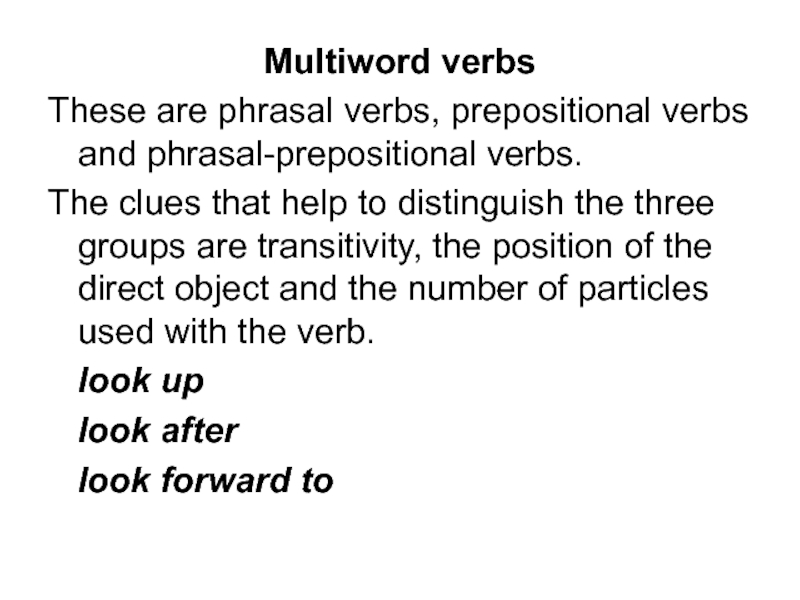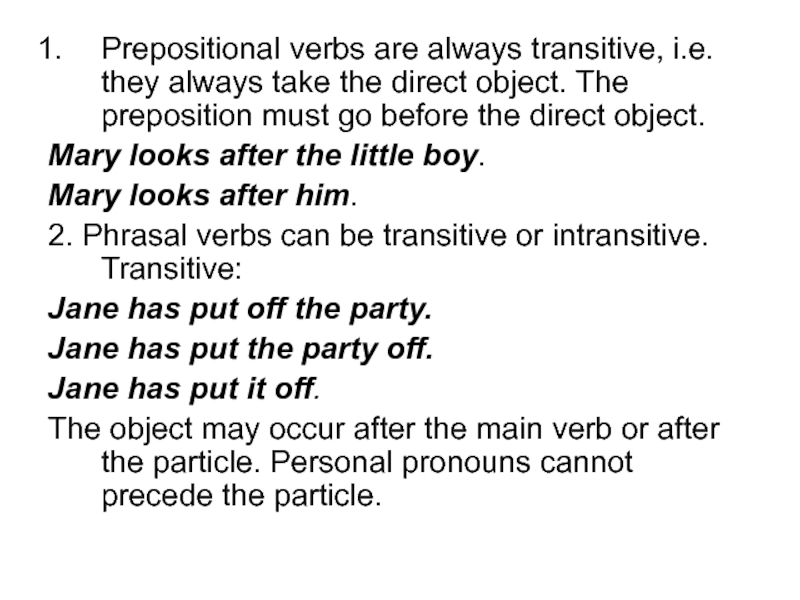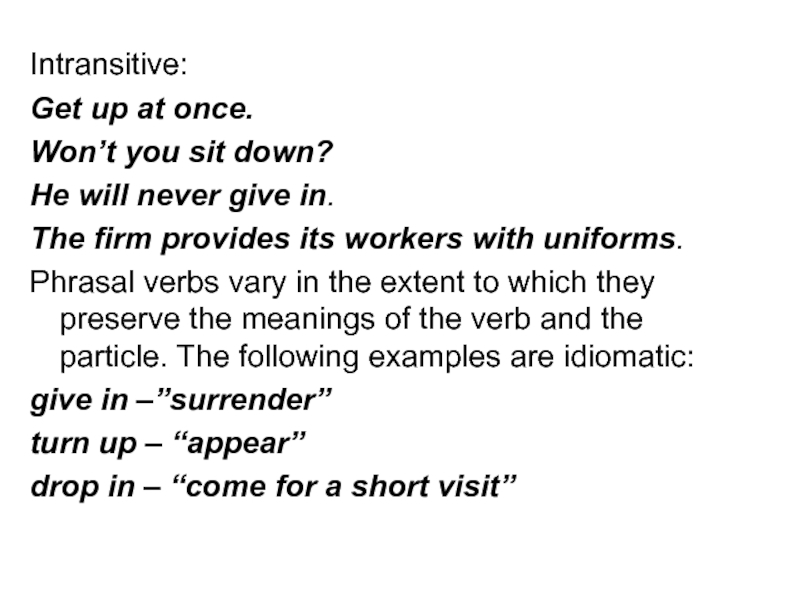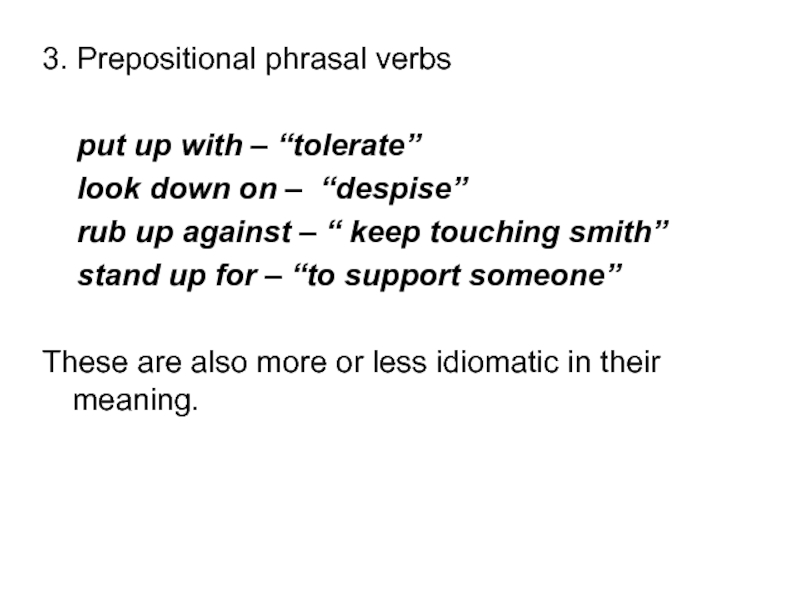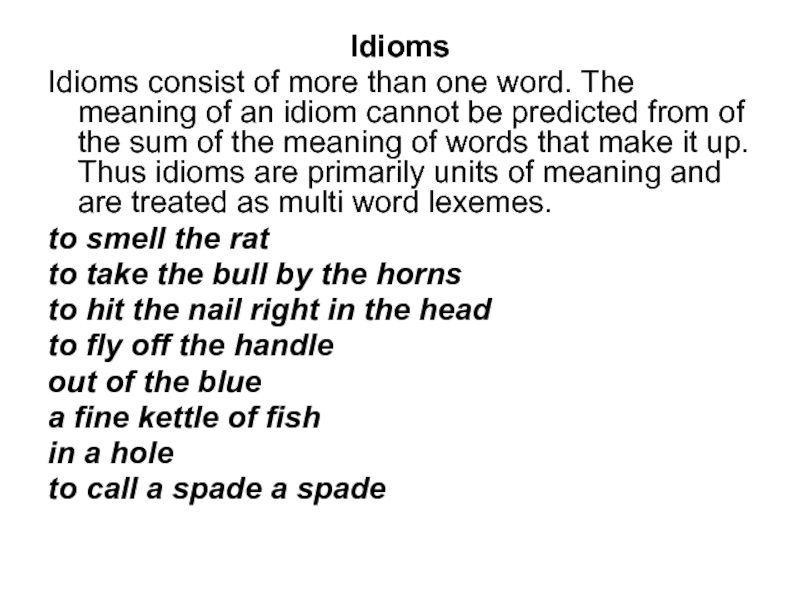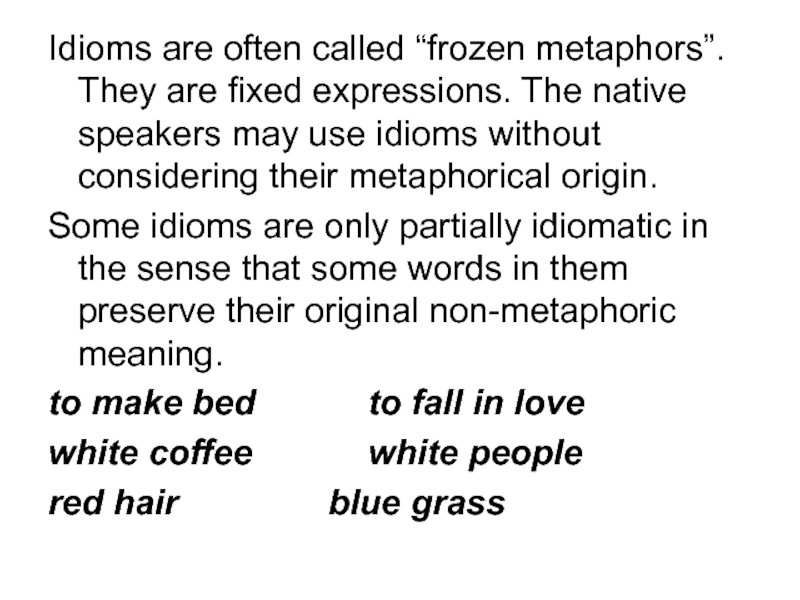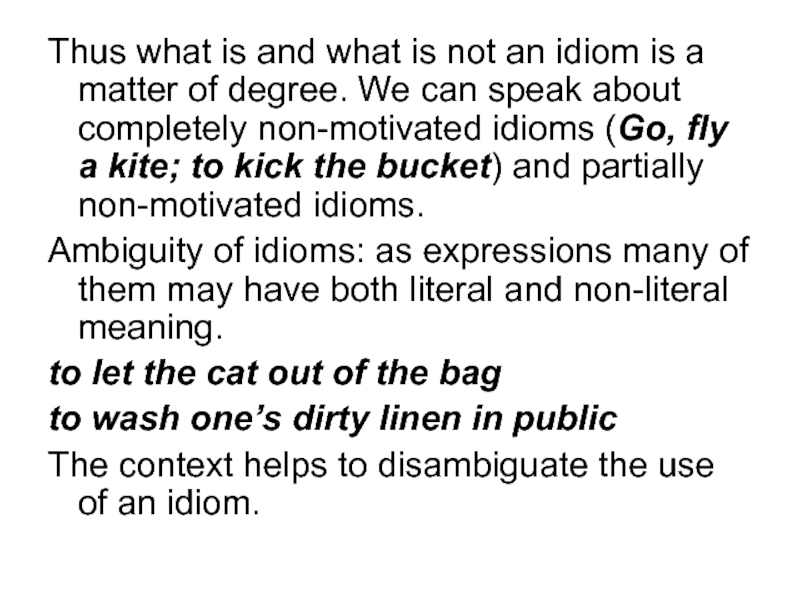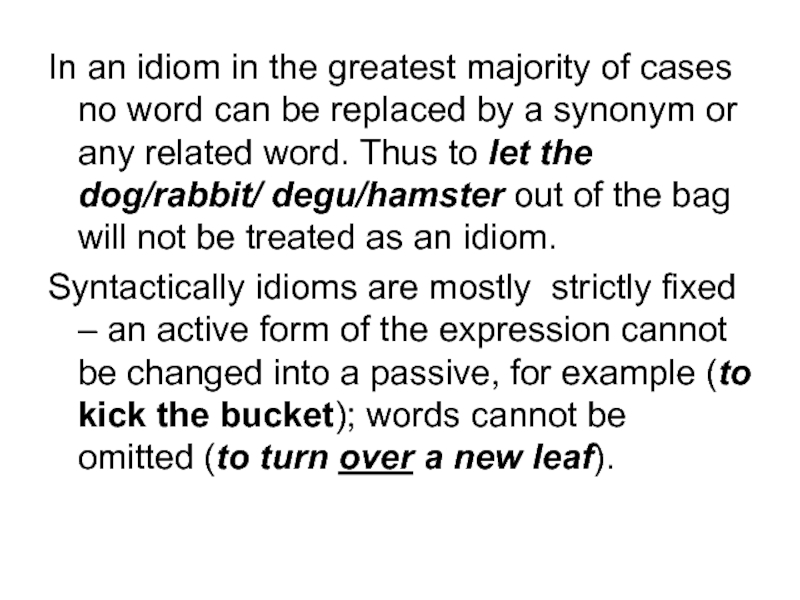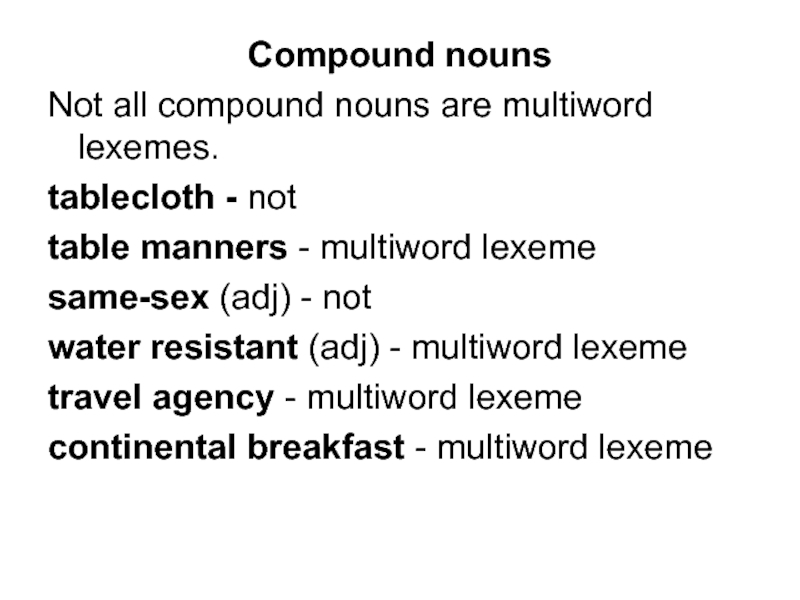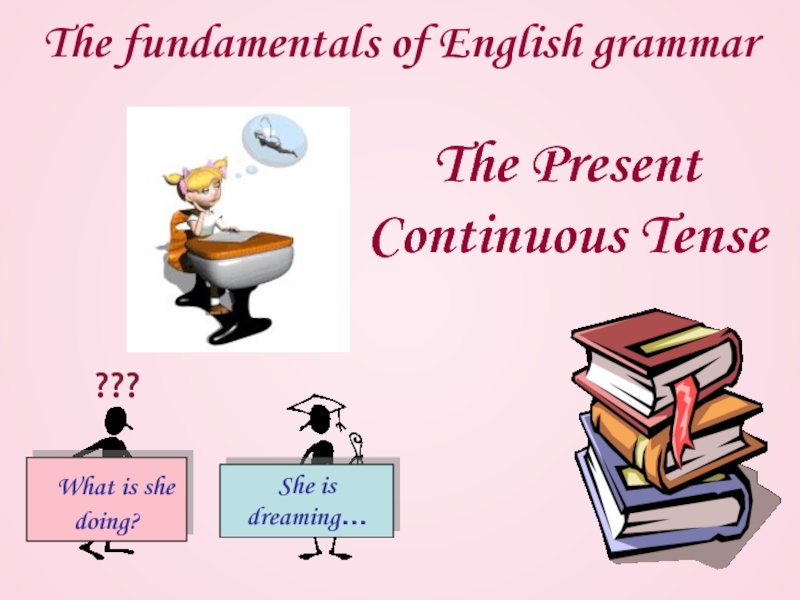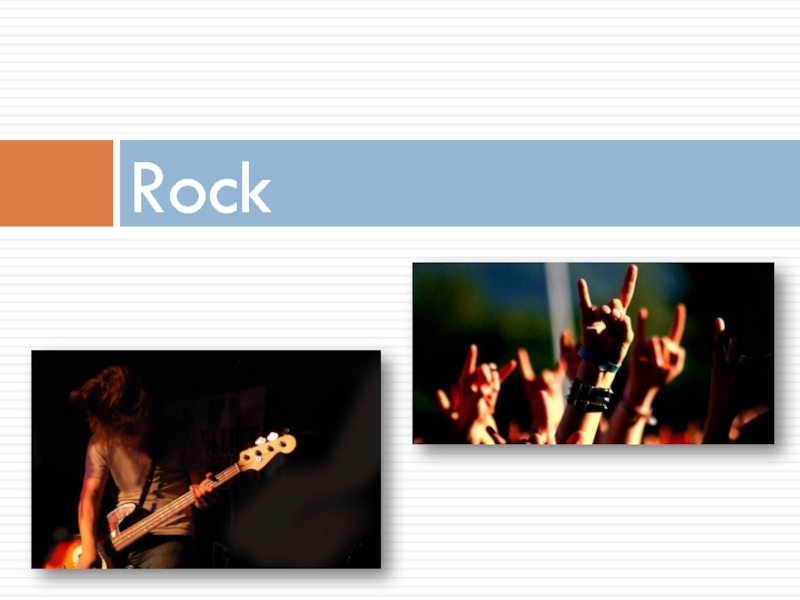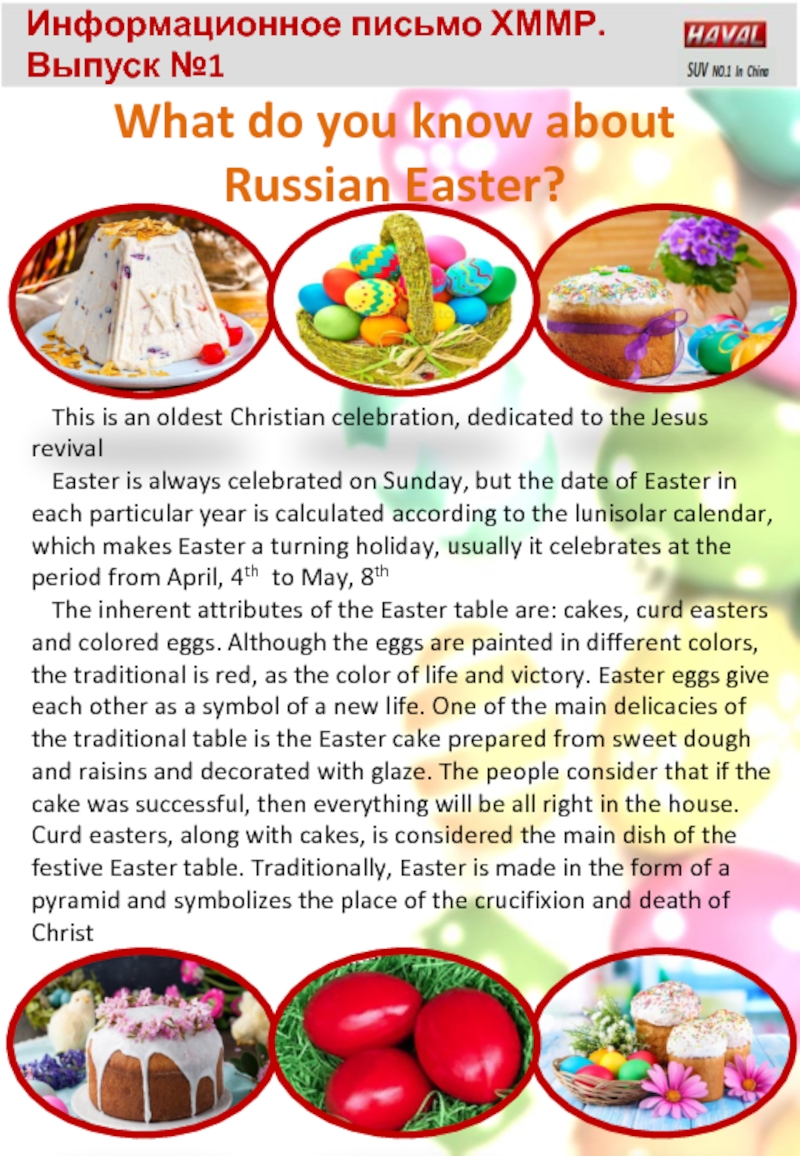- Главная
- Разное
- Дизайн
- Бизнес и предпринимательство
- Аналитика
- Образование
- Развлечения
- Красота и здоровье
- Финансы
- Государство
- Путешествия
- Спорт
- Недвижимость
- Армия
- Графика
- Культурология
- Еда и кулинария
- Лингвистика
- Английский язык
- Астрономия
- Алгебра
- Биология
- География
- Детские презентации
- Информатика
- История
- Литература
- Маркетинг
- Математика
- Медицина
- Менеджмент
- Музыка
- МХК
- Немецкий язык
- ОБЖ
- Обществознание
- Окружающий мир
- Педагогика
- Русский язык
- Технология
- Физика
- Философия
- Химия
- Шаблоны, картинки для презентаций
- Экология
- Экономика
- Юриспруденция
The Word. Definitions and Interpretations презентация
Содержание
- 1. The Word. Definitions and Interpretations
- 2. Difficulties in the definition of the word
- 3. 2. An indivisible unit of thought.
- 4. Count the words in the following sentence:
- 5. bow 1 [beu]– kilpa bow 2
- 6. There are 13 different lexemes. (the
- 7. Four characteristics of words The word is
- 8. It is not always easy to recognize
- 9. Ambiguity in the notion of word The
- 10. 2. The multiple aspects of every word.
- 11. 4. Lack of familiarity with the referent
- 12. Word meaning The word as a linguistic
- 13. Sense – meaning relations within language There
- 14. Connotation – the associations that a word
- 15. Hollywood denotes an area of LA known
- 16. The referential meaning of a lexeme is
- 17. Salt – a natural white mineral added
- 18. Multiword Lexemes Definition of lexeme (Jackson and
- 19. Multiword verbs These are phrasal verbs, prepositional
- 20. Prepositional verbs are always transitive, i.e. they
- 21. Intransitive: Get up at once. Won’t you
- 22. 3. Prepositional phrasal verbs
- 23. Idioms Idioms consist of more than one
- 24. Idioms are often called “frozen metaphors”. They
- 25. Thus what is and what is not
- 26. In an idiom in the greatest majority
- 27. Compound nouns Not all compound nouns are
Слайд 2Difficulties in the definition of the word
There are a lot
of definitions of the word. It is hard to find a satisfactory one. On the other hand, people have no difficulties in recognizing words of their native language. Below are three definitions which emphasize different aspects of word:
A sequence of letters separated by spaces on both sides.
A sequence of letters separated by spaces on both sides.
Слайд 3 2. An indivisible unit of thought.
3. The minimal free
form. (Bloomfield)
Distinction should be made between orthographic words, phonological words, word forms and lexemes.
Lexeme is the smallest distinctive unit in the lexicon of a language. The term was introduced to avoid the ambiguity of the term “word’. Lexeme subsumes a range of variant grammatical forms (go – going - goes).
Distinction should be made between orthographic words, phonological words, word forms and lexemes.
Lexeme is the smallest distinctive unit in the lexicon of a language. The term was introduced to avoid the ambiguity of the term “word’. Lexeme subsumes a range of variant grammatical forms (go – going - goes).
Слайд 4Count the words in the following sentence:
You can’t tie a bow
with the rope in the bow of a boat. (Jackson 1988:1)
The most straightforward answer - 14 words.
can’t ?
Some words occur more than once (a, the)
Bow (two or one)?
The most straightforward answer - 14 words.
can’t ?
Some words occur more than once (a, the)
Bow (two or one)?
Слайд 5bow 1 [beu]– kilpa
bow 2 [bau] – laivo priekis
The
answer:
There are 11 different orthographic words, with two instances each of a, the and bow.
There are 12 different phonological words, with two instances each of the indefinite and the definite articles.
There are 13 different word forms (grammatically can and not are distinct word forms)
There are 11 different orthographic words, with two instances each of a, the and bow.
There are 12 different phonological words, with two instances each of the indefinite and the definite articles.
There are 13 different word forms (grammatically can and not are distinct word forms)
Слайд 6
There are 13 different lexemes. (the two instances of bow are
two distinct lexemes since they carry different meanings and get separate entries in a dictionary)
Lexemes appear as headwords of dictionary entries.
Lexemes appear as headwords of dictionary entries.
Слайд 7Four characteristics of words
The word is an uninterruptible unit. Elements are
added to the beginning or end and are never included within the word.
The word may consist of one or more morphemes. When a word consists of more than one morpheme, it may be complex or compound. Complex – can be broken into one free and one or more bound morphemes. Compound words consist of more than one free form.
The word may consist of one or more morphemes. When a word consists of more than one morpheme, it may be complex or compound. Complex – can be broken into one free and one or more bound morphemes. Compound words consist of more than one free form.
Слайд 8It is not always easy to recognize morphemes – woman, cupboard,
breakfast historically compound words, but now are unanalysable in to morphemes.
3. The word occurs typically in the structure of phrases. Morphemes are used to build words and words are used to build phrases, phrases – to build clauses.
4. Each word should belong to a specific word class or part of speech.
3. The word occurs typically in the structure of phrases. Morphemes are used to build words and words are used to build phrases, phrases – to build clauses.
4. Each word should belong to a specific word class or part of speech.
Слайд 9Ambiguity in the notion of word
The most important sources of ambiguity
of word are four:
1.The generic character of the word. Words denote not single items but classes of things or entities. There is always a certain amount of generalization, which inevitably involves an element of vagueness. E. g. chair (what makes a chair a chair? Number of legs? Function?)
1.The generic character of the word. Words denote not single items but classes of things or entities. There is always a certain amount of generalization, which inevitably involves an element of vagueness. E. g. chair (what makes a chair a chair? Number of legs? Function?)
Слайд 102. The multiple aspects of every word.
We have to discriminate between
distinctive and non-distinctive features of words. E.g. table (the color, shape, material are not essential).
3. The lack of clear-cut boundaries in the world.
The nature of the non-linguistic world itself may be a source of ambiguity. One phenomenon may merge into another. E.g. color spectrum is a continuum. But each language divides it into a certain amount of arbitrary distinctions
3. The lack of clear-cut boundaries in the world.
The nature of the non-linguistic world itself may be a source of ambiguity. One phenomenon may merge into another. E.g. color spectrum is a continuum. But each language divides it into a certain amount of arbitrary distinctions
Слайд 114. Lack of familiarity with the referent of a word. General
knowledge and specific interests of individuals. E.g. agricultural terms, computer terms, linguistic terms, etc.
Emotive overtones – word expresses emotions or arouses them in others. This may be opposed to the communicative/informative use of language, but may be even dominant in an utterance (He is bad.)
Emotive overtones – word expresses emotions or arouses them in others. This may be opposed to the communicative/informative use of language, but may be even dominant in an utterance (He is bad.)
Слайд 12Word meaning
The word as a linguistic sign consists of meaning and
form
referent, concept, form
Denotation – the relation between a lexeme and a whole class of extra-linguistic objects.
Reference – the relation between word and what it stands for in a particular context.
referent, concept, form
Denotation – the relation between a lexeme and a whole class of extra-linguistic objects.
Reference – the relation between word and what it stands for in a particular context.
Слайд 13Sense – meaning relations within language There may be words that
have sense but no denotation (unicorn, dragon)
Denotation and connotation
There is no universal treatment of the distinction between these two types of meaning. Connotations make additional properties of lexemes – poetic, slang, emotive, humorous, etc.
Denotation and connotation
There is no universal treatment of the distinction between these two types of meaning. Connotations make additional properties of lexemes – poetic, slang, emotive, humorous, etc.
Слайд 14Connotation – the associations that a word has over and above
its denotation. Linguistically significant are the associations that a word carries for a whole language community, e.g. caviar denotes luxury, high class, money, candle – religious or romantic connotations.
The noun woman is defined conceptually by three features: HUMAN, FEMALE ,ADULT but there is a multitude of additional features that we have learned to expect of the referent - psychological and social properties (experienced in cookery, gregarious, likes to dress nicely, is prone to tears).
The noun woman is defined conceptually by three features: HUMAN, FEMALE ,ADULT but there is a multitude of additional features that we have learned to expect of the referent - psychological and social properties (experienced in cookery, gregarious, likes to dress nicely, is prone to tears).
Слайд 15Hollywood denotes an area of LA known as the center of
American movie industry, but connotes glamour, glitz and stardom.
Thus connotation is a non-central word meaning acquired through frequent associations. Connotation is closely related with synonymy since synonyms may have the same denotation but different connotations. Both aspects are important in determining word meaning in a given context.
Thus connotation is a non-central word meaning acquired through frequent associations. Connotation is closely related with synonymy since synonyms may have the same denotation but different connotations. Both aspects are important in determining word meaning in a given context.
Слайд 16The referential meaning of a lexeme is its denotation and connotation.
It depends on the context in which the lexeme is used. The context is of two kinds: linguistic (the sentence, the text) and situational (extralinguistic).
The definitions of lexemes given in dictionaries cannot provide all the aspects of its meaning. Thus the meaning of a lexeme (its sense) in a dictionary entry must be regarded as “potential”, a distillation of the essentials (Jackson 1988: 60) . It is actualized in a particular context.
The definitions of lexemes given in dictionaries cannot provide all the aspects of its meaning. Thus the meaning of a lexeme (its sense) in a dictionary entry must be regarded as “potential”, a distillation of the essentials (Jackson 1988: 60) . It is actualized in a particular context.
Слайд 17Salt – a natural white mineral added to food to make
it taste better (Longman 2007)
Salt – a very common colorless or white solid substance [sodium chloride] found in the Earth and in sea water and with many used including preserving food and improving the taste (Longman 1978)
Salt –sodium chloride, NaCl, a white crystal like substance found in natural beds, in sea water, etc., used for seasoning and preserving food, etc. (Webster 1980)
Salt – a very common colorless or white solid substance [sodium chloride] found in the Earth and in sea water and with many used including preserving food and improving the taste (Longman 1978)
Salt –sodium chloride, NaCl, a white crystal like substance found in natural beds, in sea water, etc., used for seasoning and preserving food, etc. (Webster 1980)
Слайд 18Multiword Lexemes
Definition of lexeme (Jackson and Ze Amvela 2001: 63): it
is a unit of lexical meaning which exists regardless of inflectional endings or the number of words it may contain.
The definition implies that a lexeme may consist of more than one word.
Three types of multiword lexemes:
Phrasal and prepositional words.
Idioms. 3. Some compounds.
The definition implies that a lexeme may consist of more than one word.
Three types of multiword lexemes:
Phrasal and prepositional words.
Idioms. 3. Some compounds.
Слайд 19Multiword verbs
These are phrasal verbs, prepositional verbs and phrasal-prepositional verbs.
The clues
that help to distinguish the three groups are transitivity, the position of the direct object and the number of particles used with the verb.
look up
look after
look forward to
look up
look after
look forward to
Слайд 20Prepositional verbs are always transitive, i.e. they always take the direct
object. The preposition must go before the direct object.
Mary looks after the little boy.
Mary looks after him.
2. Phrasal verbs can be transitive or intransitive. Transitive:
Jane has put off the party.
Jane has put the party off.
Jane has put it off.
The object may occur after the main verb or after the particle. Personal pronouns cannot precede the particle.
Mary looks after the little boy.
Mary looks after him.
2. Phrasal verbs can be transitive or intransitive. Transitive:
Jane has put off the party.
Jane has put the party off.
Jane has put it off.
The object may occur after the main verb or after the particle. Personal pronouns cannot precede the particle.
Слайд 21Intransitive:
Get up at once.
Won’t you sit down?
He will never give in.
The
firm provides its workers with uniforms.
Phrasal verbs vary in the extent to which they preserve the meanings of the verb and the particle. The following examples are idiomatic:
give in –”surrender”
turn up – “appear”
drop in – “come for a short visit”
Phrasal verbs vary in the extent to which they preserve the meanings of the verb and the particle. The following examples are idiomatic:
give in –”surrender”
turn up – “appear”
drop in – “come for a short visit”
Слайд 223. Prepositional phrasal verbs
put up with – “tolerate”
look down on – “despise”
rub up against – “ keep touching smith”
stand up for – “to support someone”
These are also more or less idiomatic in their meaning.
rub up against – “ keep touching smith”
stand up for – “to support someone”
These are also more or less idiomatic in their meaning.
Слайд 23Idioms
Idioms consist of more than one word. The meaning of an
idiom cannot be predicted from of the sum of the meaning of words that make it up. Thus idioms are primarily units of meaning and are treated as multi word lexemes.
to smell the rat
to take the bull by the horns
to hit the nail right in the head
to fly off the handle
out of the blue
a fine kettle of fish
in a hole
to call a spade a spade
to smell the rat
to take the bull by the horns
to hit the nail right in the head
to fly off the handle
out of the blue
a fine kettle of fish
in a hole
to call a spade a spade
Слайд 24Idioms are often called “frozen metaphors”. They are fixed expressions. The
native speakers may use idioms without considering their metaphorical origin.
Some idioms are only partially idiomatic in the sense that some words in them preserve their original non-metaphoric meaning.
to make bed to fall in love
white coffee white people
red hair blue grass
Some idioms are only partially idiomatic in the sense that some words in them preserve their original non-metaphoric meaning.
to make bed to fall in love
white coffee white people
red hair blue grass
Слайд 25Thus what is and what is not an idiom is a
matter of degree. We can speak about completely non-motivated idioms (Go, fly a kite; to kick the bucket) and partially non-motivated idioms.
Ambiguity of idioms: as expressions many of them may have both literal and non-literal meaning.
to let the cat out of the bag
to wash one’s dirty linen in public
The context helps to disambiguate the use of an idiom.
Ambiguity of idioms: as expressions many of them may have both literal and non-literal meaning.
to let the cat out of the bag
to wash one’s dirty linen in public
The context helps to disambiguate the use of an idiom.
Слайд 26In an idiom in the greatest majority of cases no word
can be replaced by a synonym or any related word. Thus to let the dog/rabbit/ degu/hamster out of the bag will not be treated as an idiom.
Syntactically idioms are mostly strictly fixed – an active form of the expression cannot be changed into a passive, for example (to kick the bucket); words cannot be omitted (to turn over a new leaf).
Syntactically idioms are mostly strictly fixed – an active form of the expression cannot be changed into a passive, for example (to kick the bucket); words cannot be omitted (to turn over a new leaf).
Слайд 27Compound nouns
Not all compound nouns are multiword lexemes.
tablecloth - not
table
manners - multiword lexeme
same-sex (adj) - not
water resistant (adj) - multiword lexeme
travel agency - multiword lexeme
continental breakfast - multiword lexeme
same-sex (adj) - not
water resistant (adj) - multiword lexeme
travel agency - multiword lexeme
continental breakfast - multiword lexeme
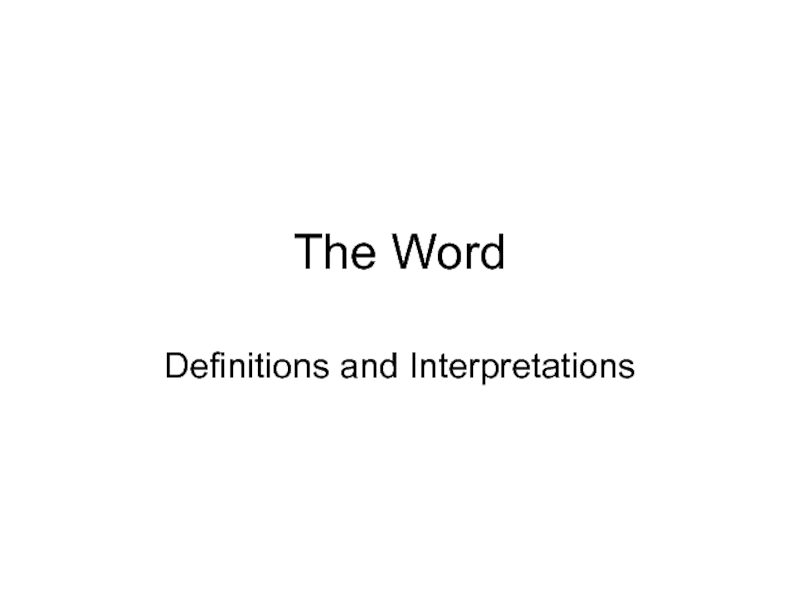
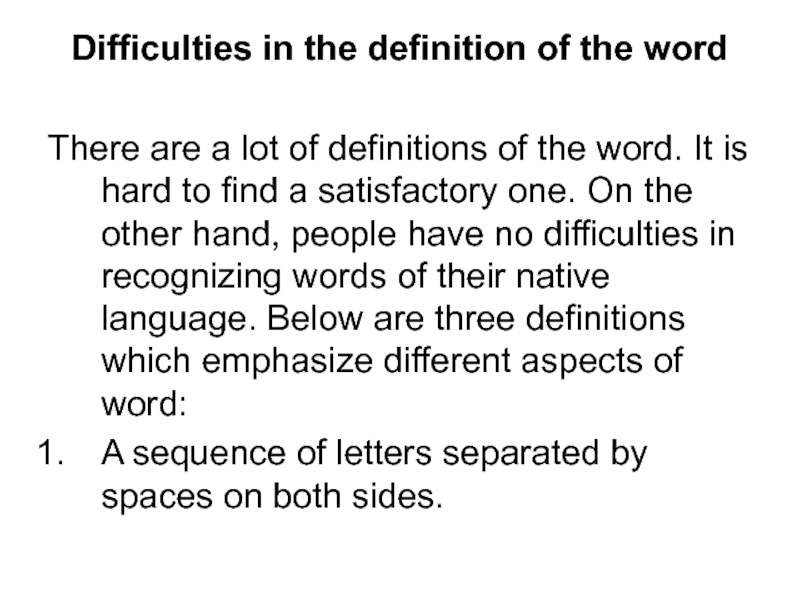
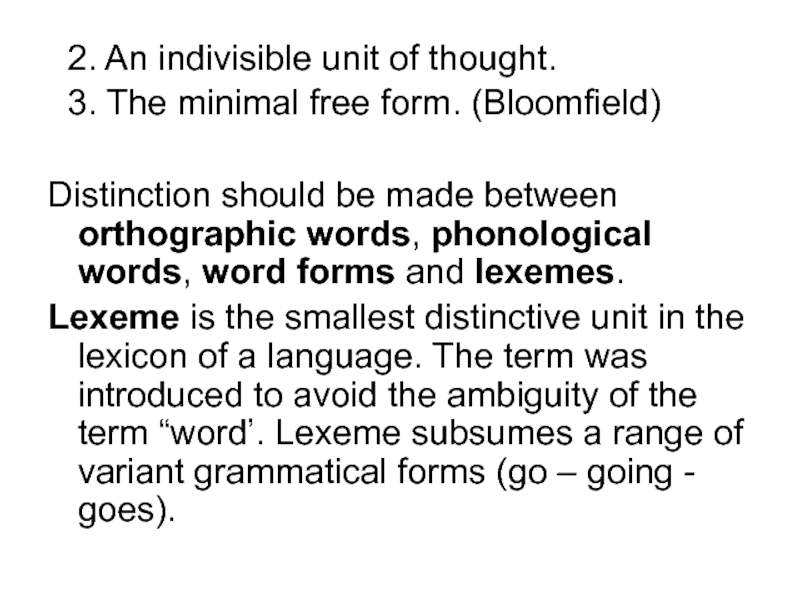
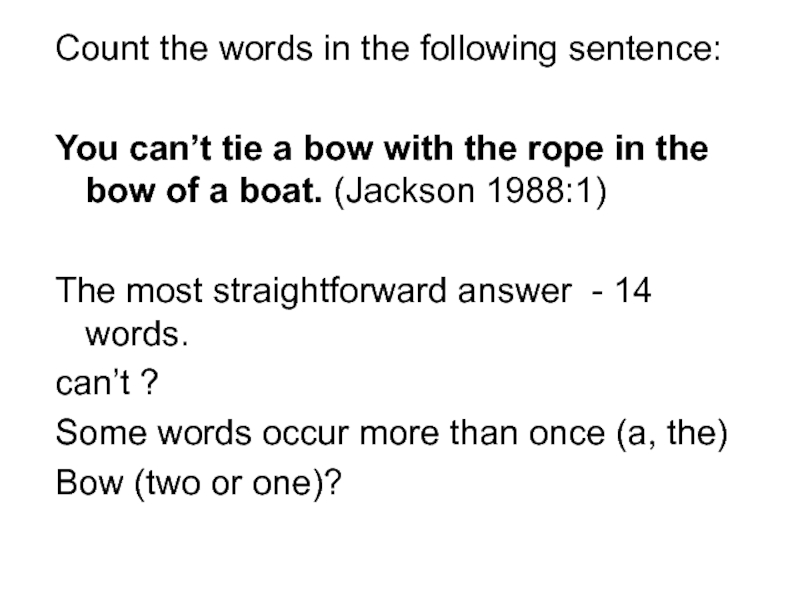
![bow 1 [beu]– kilpa bow 2 [bau] – laivo priekis The answer:There are 11 different](/img/tmb/6/512772/aecff282dcba73233057aff8fe682ed7-800x.jpg)
